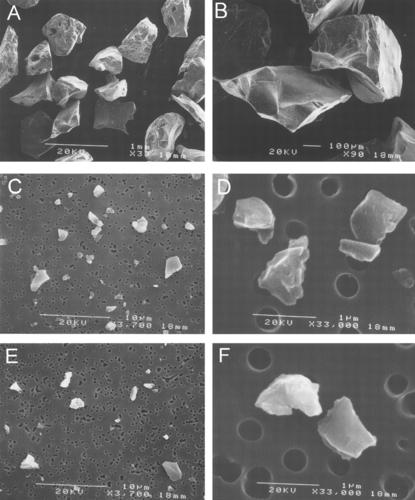Results 11 to 20 of 48
Thread: Coticule Slurry BS?
-
05-28-2011, 06:23 AM #11
 The white gleam of swords, not the black ink of books, clears doubts and uncertainties and bleak outlooks.
The white gleam of swords, not the black ink of books, clears doubts and uncertainties and bleak outlooks.
-
05-28-2011, 06:26 AM #12

I don't know much about rocks, but this seems to me to be as much about how we create models and explanations as about the actual structure of the coticule. At some point, it seems that the cutting characteristics of coticules were noted, and people tried to model what the stone must be like by reverse engineering a possible mechanism for how the stone does that cutting. Toss in some background knowledge about the rocks, and there you go.
Now it sounds like we are getting some new info, so we may need to tweak the model. Maybe other factors need to be considered. Like the binders and how the abrasives sit in the binders. Or maybe there is something to the way in which the slurry tends to break or align under the honing pressure.
There may be some errors in the mechanism and model, but the end result (how the stones cut steel) remain the same. It would sure be nice to know more about how that happens, to have an accurate model and mechanism, though. Cause we all get curious, right? But hey, even if all we do is show errors in the old model, we're still making progress. After all, there are no mistakes in science.
-
05-28-2011, 07:19 AM #13

I always presumed that they got that information from the University of Liege where the BBW sharpening qualities were identified (according to their website). Having said that, not possessing a microscope I just took it on assumed trust, always a dangerous game. I don't suppose you can post photos of what you're seeing, Utopian? I, for one, would be very interested if this were possible. Edit. Just reread your OP, ignore my last request, sorry.
Last edited by AlanII; 05-28-2011 at 07:21 AM.
-
05-28-2011, 12:23 PM #14

IIRC the explanation given on the honing qualities of the BBW, in comparison to the yellow coticule, was that the garnets are larger, and as you say, fewer and farther between......i.e. sparse. Seems if that is the case, we should be able to see the larger garnet intact more readily at the microscopic level in BBW slurry than in coticule slurry. Oh well, whether it is one shape or another won't affect how I use the stones but it is interesting to speculate on the question.
 Be careful how you treat people on your way up, you may meet them again on your way back down.
Be careful how you treat people on your way up, you may meet them again on your way back down.
-
05-28-2011, 03:41 PM #15

It isn't coti slurry, but here's a SEM photo of garnet fragments at various magnifications.
D and F show micron-sized pieces.

click image for large version
source:
Toxicol. Sci. (2001) 61 (1): 135-143.
-
05-28-2011, 03:52 PM #16

Perfect crystals are rarely found in natural rocks. I have seen the red garnets with a mike, but never a perfect crystal. You can see a picture here: Belgischer Brocken, Schleifstein, schrfen, Schrfstein, Abziehstein
Click on INFOS and then the first picture on the left for coticule slurry and the third on the left for Belgian Blue garnets which are larger.Plus ça change, plus c'est la même chose. Jean-Baptiste Alphonse Karr.
-
-
05-28-2011, 04:52 PM #17illegitimum non carborundum



- Join Date
- Jan 2008
- Location
- Rochester, MN
- Posts
- 11,552
- Blog Entries
- 1
Thanked: 3795
Thanks Kees. I've never seen anything like that in my slurries. I guess I need more coticules!
-
05-28-2011, 07:31 PM #18

This is a very complex subject. First of all a Coticule is a metamorphic rock meaning it's subjected to heat and pressure so if any intact garnets were there they would most likely be all deformed or even obliterated. Second beautiful xtls often times reside in Mineralogical textbooks. In the real world to form a perfect xtl you need perfect conditions which seldom happens. Yes you can find them, it depends on the mineral and garnets can found pretty perfect depeding on the variety and how it was formed. Also garnets are found in many variations and they come in all kinds of shapes. The only common to them is they all reside in the isometric Xtl System. Dodecahedrons are very common.
No matter how many men you kill you can't kill your successor-Emperor Nero
-
05-28-2011, 07:52 PM #19

What puzzles me is, if garnets will cut steel in the slurry, why wouldn't they do so when merely embedded in the stone? If the rest of the stone would cut steel, why wouldn't it do so in the slurry?
Perhaps the process of creating the slurry removes steel clogging between the outermost layer of grains.
-
05-28-2011, 10:06 PM #20

I will preface this statement with the disclaimer that I am pulling this out of my RDB.
I think the important thing is, that garnet is known for being a friable abrasive. When it fractures the new edges on the fractured garnets are sharp.
Charlie


 15Likes
15Likes LinkBack URL
LinkBack URL About LinkBacks
About LinkBacks








 Reply With Quote
Reply With Quote

